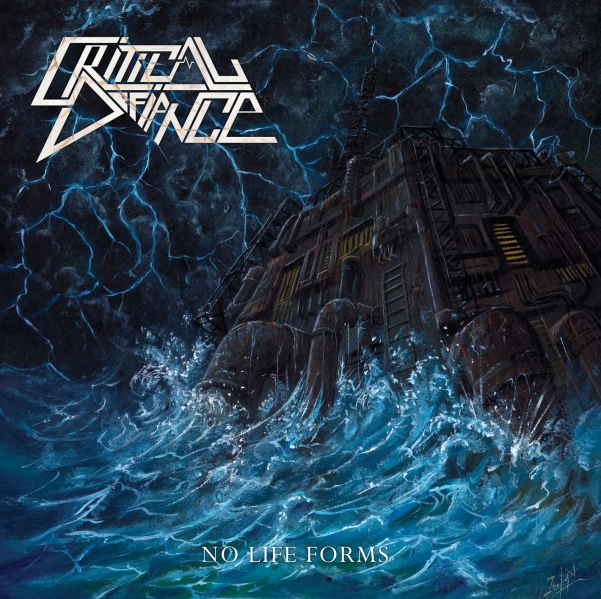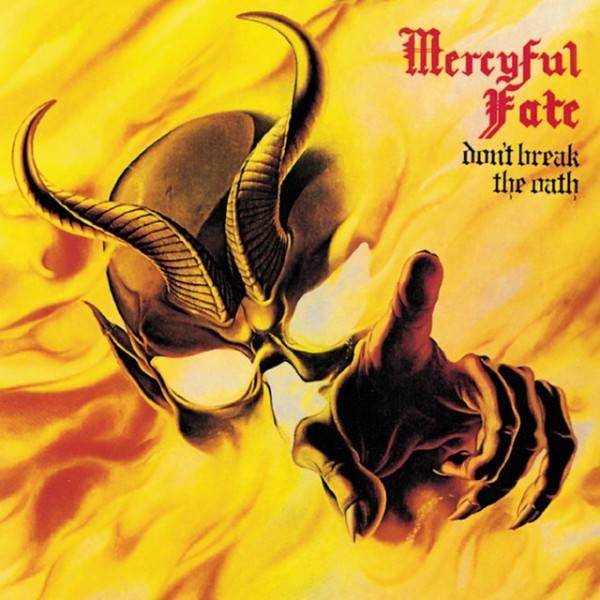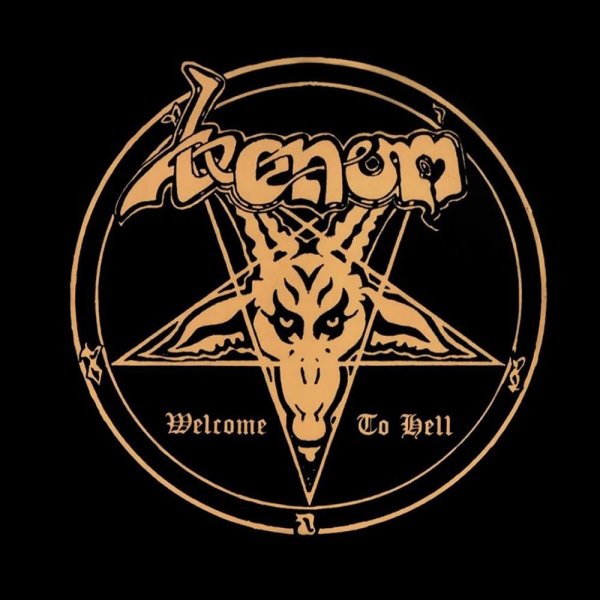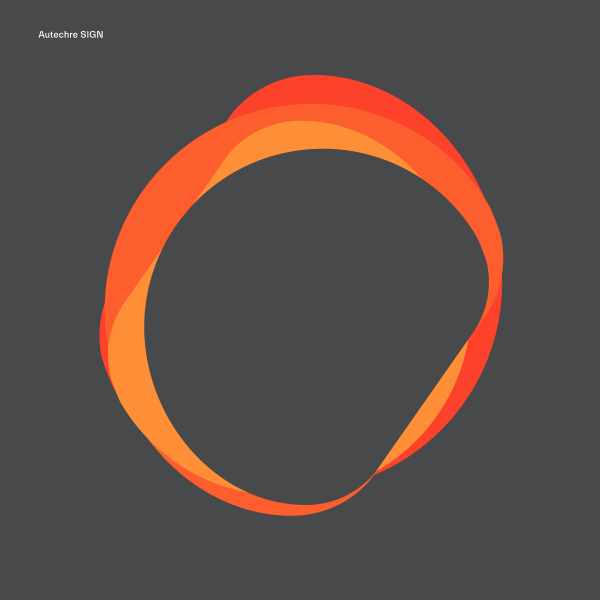Invisible Blog is on indefinite hiatus!
This may be pretty apparent from the recent post history, but… I haven’t had the time or interest to write for Invisible Blog in a while. This may change in the future, but I can’t make any guarantees. In the meantime, you’ve got 12 years of archives to peruse if you’re inclined.
Arca – Madre (2021)

Ooh, salacious! Ironically, though, this Arca EP (released between the first KiCk and the other four) is actually a gentle and contemplative recording. It’s a far cry from both the noisy/experimental parts of her discography and her recent, futuristic trans diva era. It’s probably closest in spirit (if not form) to her self-titled back in 2017, which makes sense since the actual song was written around the same time as that album. Still, I have to wonder – what was the origin of Madre? Arca herself sheds some light on this in interviews, but straight up neoclassical is an interesting turn, and definitely worth investigating, even if I haven’t really got the ability to deep delve what might’ve birthed this… you know, besides motherhood.
Madre, as an EP, is structured in a way that doesn’t come up a lot in my general listening experience – one song in multiple permutations. We get our original (the title track), an alternative arrangement in the shape of “Madreviolo”, an acapella of “Madre”, and the instrumental from “Madreviolo”. The latter seems like it might be pretty useful if I ever end up covering the song. It seems pretty achievable, even if Arca’s a lot more comfortable with the lower end of her vocal range than I am. Vocal dysphoria is a bitch! But it reveals another commonality with the self titled – dark, soft balladic singing that taps into the same aesthetic of queer longing as before. That being said, Arca was also a more varied recording that included some references to the harsher side of her music. Madre, in practice, is more of a deep delve into a very specific mood. Perfect choice for an EP, really.
Mind you, as important as the vocals are, Madre just wouldn’t be without either of its backings. Each one has its perks. That being said, the first one (as written and arranged by Oliver Coates) is more directly to my tastes. Coates backs “Madre” with a lush, colorful string ensemble – slowly cycling from impressionistic chord to impressionistic chord. It’s a joy to listen to. Arca’s take on her own material is sparser; to my understanding, it’s written for and performed on a single cello that’s since been destroyed for the art of it. The vocals on top of “Madreviolo” sound like they’re almost the same, except that they’ve been pitch shifted up a whole step. It’s really neat that we got this alternate take on the song, to say the least. Either way, it should go to show just how versatile they are as a composer. It reinforces my struggle to criticize her.
Highlights: …is an educational magazine for children.
Lingua Ignota – CALIGULA (2019)

Even when we’re not listening to black metal, we can still hear its ebon shadow creeping over the land. So it is with Lingua Ignota. The music press seems to be in the habit of describing Kristen Hayter’s neoclassical darkwave project as being particularly black metal influenced. It makes sense – this is an album that’s full of ghastly screams and the occasional tremolo guitar. The resemblance is just strong enough that I’d like to see Hayter’s take on a straight-ahead black metal album, but we’re not here to talk counterfactuals. CALIGULA is a recent favorite of mine, and if my latest (impulsive) vacation plans are anything to go by, then Lingua Ignota as a whole must’ve struck a chord with me. Let’s listen in, shall we?
To summarize quickly – Lingua Ignota is fundamentally about abuse – particularly the kind that can happen in a romantic relationship. If you ask me, though, you can extend this metaphor to religious institutions (evangelical Christianity has… a problem with this) or even the entirety of the patriarchal society we live in. Kristen Hayter particularly taps into the idea of retaliating against abuse, even if that looks violent and even murderous. That specific point culminates in the middle of the album with the lovingly titled “FRAGRANT IS MY MANY FLOWER’D CROWN”. CALIGULA dives deep into into its religious imagery and comes up with something that’s raw, desperate, and frequently ugly. I’ve never experienced relationship abuse before, and I’m fortunate, but it could happen someday. In the meantime, I have to sympathize.
As heavy and sombre as the source material is, the arrangements here are a delight to listen to. The key selling point is Kristen Hayter’s multilayered and versatile vocals. There’s some wild chorales strewn throughout – it’s not an approach I have much experience creating in my own work, but figuring out how to build pleasing chord progressions in this style (and tonality) of music takes some doing… and some willingness to embrace dissonance (not quite Carlo Gesualdo tier antics, but still). There’s also some fascinating tricks with resonance – the aforementioned “FRAGRANT <redacted>”, for instance, features a few moments of overtone singing for your pleasure. This is just the clean side – Hayter’s a gifted screamer, and her throat-ripping antics were sorely missed on this album’s nominally mellower successor (SINNER GET READY). The instrumental side of things works, but it’s not nearly as attention glomming – you get a mixture of classical style arrangements and a bit of harsh noise – the latter’s also used to great effect, mind you. If you ask me, the other instruments are best when they contrast the vocals. “DO YOU DOUBT ME TRAITOR” in particularly pulls this off – the last third or so features unnerving synth blasts over one of the aforementioned chorales, and it’s just so visceral. Album is full of these moments, to boot.
Ultimately, CALIGULA is a lot, but it’s worth the effort. It has enough weirdness and horror to grab your attention immediately, but also enough musical depth to keep you listening for a long time.
Highlights: “DO YOU DOUBT ME TRAITOR”, “BUTCHER OF THE WORLD”, “SPITE ALONE HOLDS ME ALOFT”
Thotcrime – ønyøurcømputer (2020)
KAKU P-MODEL – Gipnoza (2014)

It took Susumu Hirasawa an entire decade to return to the KAKU P-MODEL moniker! To be fair, he was kinda busy in the interrim.
Read more…Ice Ages – Nullify (2019)

Remember Summoning? To be fair, they’re still around. Their main guitarist and drum-programmer (Richard Lederer, aka “Protector”) has contributing to the Austrian metal +/- adjacent scene for almost three decades. When he’s not summoning a new Summoning release, there’s a good chance Protector is working on his electro-industrial project, Ice Ages. The two are more closely related than you might think; most notably, “Trapped and Scared” off Ice Ages’ debut got reworked into “Over Old Hills” off Summoning’s Dol Guldur. Nullify hits many of the same notes, but it trades out Summoning’s days of lore and ancient magic for harsh synthesizers and a frigid, crystalline, even apocalyptic aesthetic. The Company of the Ring never had to deal with this!
Summoning and Ice Ages do, for what it’s worth, make for good elementary/middle school-era compare and contrast essays; to be clear, I think the similarities are more important. Both projects tend towards slow songs that rely heavily on repetition and intricate soundscapes to sell their ambience. As far as I’m concerned, “Trapped and Scared” isn’t just a fluke – were you or the original composers willing, you could easily convert one project’s output to another by swapping out the instrumentation (and vocal styles). The arrangements wouldn’t need to change much, though some percussion adjustments wouldn’t hurt. Electro-industrial that takes its cues from ambient dungeon synth is a mood, though; if you ask my mind to conjure some up, it’s going to sound more like… for example, early Front Line Assembly. Nullify offers us less sampling, more (minor-key) melodies, and an utterly oppressive atmosphere, and I’m probably more receptive to it than its sparser antecedents.
That being said, do I want to listen to Ice Ages on a regular basis? Similarities to other electronics aside, it’s not really my wheelhouse. To be fair, neither is Summoning. That doesn’t necessarily mean much on its own, though, since I’ve been known to develop the taste for otherwise out-of-scope music over the years. Really, what’s happening here is the same as what happened with Summoning – I was drawn in by how distinctive the recording sounded, but actually understanding and appreciating the goals here takes a while, even if you’re familiar with one side of the Summoning/Ice Ages coin. Case in point – the vocals in particular take a while to get used to. Protector sings here, but the vocals here are some of the most processed, distorted, and utterly alien you’ll ever hear. It just goes to show how focused Nullify is – its one goal is to grind you down and immerse you in its power. I don’t know if you want that, but if that’s what you want out of your music, it’ll provide and then some. As for me – I have to respect it.
Highlights: “Nullify”, “Empty Shrine”, “Lost”
I Played Too Many MMOs As A Child, Part 1: Subspace/Continuum
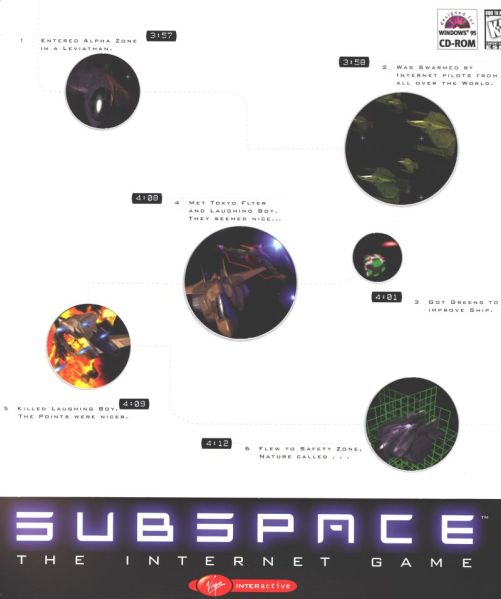
Maybe this should be part 2, on account of my even older experiences with the Free Internet Chess Server… but we’ll get to that someday.
When I was but an egg, my father gave me the best gift any father could give his child – a shareware compilation called Total Arcade 98. This slightly dodgy (and oddly casino simulator heavy) collection was my introduction to many of the games I’d play later in my childhood – Earthworm Jim, Mega Man X3, Logical Journey of the Zoombinis (more relevant to the edutainment era of my youth), and so forth. It also contained an early beta of Subspace – a massively multiplayer online action game that I couldn’t properly experience, because as a small child my access to the internet was… iffy at best. I still opened it up many times just to fly around offline and collect powerups in an empty environment. It really didn’t take much to keep me entertained in elementary school. Fast forwards a few years – I was 10, going on 11, and Home of the Underdogs (the legendary abandonware site of the era) was suddenly my main source of games, to the point that the same dad would use work internet to burn me CDs with anything I couldn’t fit on a floppy. Then, I made my way to the forums, and speak of the devil – Subspace was back in my life, with a story that in retrospect has played out repeatedly during my tenure in this body.
Read more…Anatomy of VGM #35: Castlevania Chronicles (1993/2001, Sharp X68000/PS1)
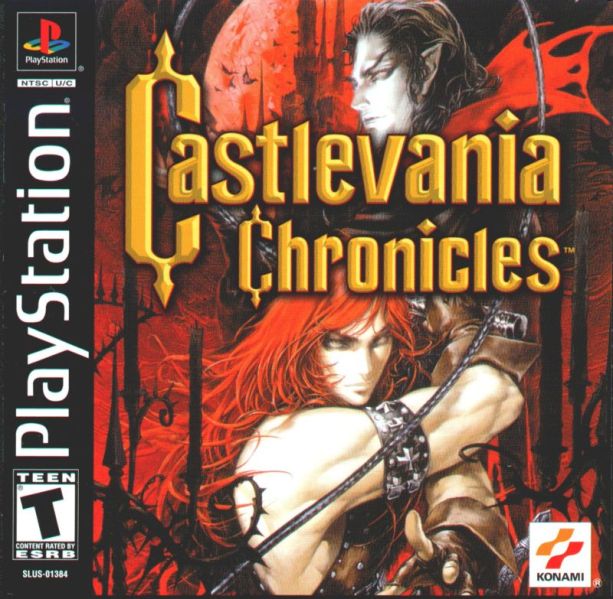
I hate to be that girl, but would you believe that I’ve only played the original version of Castlevania Chronicles? Through a Sharp X68000 emulator, mind you; an actual working machine is outside my budget. It’s very cool that both this and the PS1 port exist, though! Ultimately, today’s Anatomy of Video Game Music installment is for a game that has four versions of its soundtrack. That’s Ys tier levels of rearrangements, which is always fun to talk about even if it makes for a lot of work. Castlevania Chronicles also has the joy of being a loose remake (or perhaps more of a reimagining) of the original NES Castlevania, but it makes enough changes that you should really think of it as its own game… with its own soundtrack.
Read more…Björk – Vulnicura (2015)

Another trend that comes up a lot on Invisible Blog but perhaps doesn’t receive much mention – I usually like to space out coverage of any one musician, to the point that I’m not writing about them more than once every few months. Occasionally, though, you get a handy loophole to work with. I’d like to get in some more writing on Arca, so why not go down the route of one of her many collaborations? In this case, here’s an album she did most of the programming for. This also bookends nicely (if sadly) with my previous look at Björk. Vulnicura is a followup to Vespertine. It’s Björk’s “breakup” album; it tells us (albeit cloaked in metaphor) how her relationship with Matthew Barney ended, and how she eventually recovered from the heartbreak and loss of it all. It’s supposed to hurt.
…I exaggerate; even this mournful album has its moments of joy, especially around the edges, while we’re outside the morass of breakup. Still, this is a pretty dark and challenging album, especially from a structural stance. My previous experience with Björk exposed me to her atmospheric and horny sides, but it had comparatively more straightahead pop on it. Vulnicura ultimately has two lodestones – first and more prominently we’ve got the string sections. These sound like they come from a relatively small ensemble, which gives them a more intimate feel than what you’d get from a big string section. A good match, if you ask me. Meanwhile, Arca provides some electronic edge outside of the first and last tracks. She doesn’t push as hard or abrasively as some of her solo work, but the beats and noises here do add a level of texture that you might not get from Björk’s other electronic collaborators. It’s a potent combo, and there’s a lot to glom onto if you keep listening to this album.
Ultimately, lots of buzzwords here – strings, electronica, and Björk’s trademark vox swirling around in lengthy arrangements (most songs above 6 minutes, and “Black Lake” goes for 10!). Honestly, this hits a lot more of my buttons upfront than Vespertine, which in retrospect mostly grabbed me with singing and only really backfilled the rest later. It’s still pretty uncompromising in terms of its arrangements – maybe not on the level of an Autechre, but there’s a lot that needs to be digested before I can really, fully appreciate the layers of Vulnicura. It helps a lot that I’m already familiar with the musicians. That being said, I get enough from the craft of this album already to deem it a worthy addition to my collection. I’m optimistic that it’ll rise further.
Highlights: “Stonemilker”, “Family”, “Atom Dance”, “Quicksand”
James Ferraro – Far Side Virtual (2011)

This here’s one of the earliest vaporwave albums. Now, I’m not familiar with vaporwave (at best I’m intermittently exposed to it or its descendants), so… in retrospect I’m not entirely sure why I decided I should investigate this album. Social stuff probably had something to do with it, since I spent a chunk of the mid-2010s in Facebook groups full of memes and music producers. Maybe that’s a part of the Planepacked story? I’ll investigate. That being said, a good chunk of vaporwave plays on my nostalgia for the ’90s – the mainstream internet in its infancy, neoliberal optimism and nominal economic growth occluding the hollowing of the state, and contrary to expectations, something far from the end of history. Intellectually speaking, there’s fertile ground to explore here!
Naturally, Far Side Virtual aims for musical satire – take the most banal, corporate sounds possible, freebase every press release of the dotcom boom, and arrange the ensuing sociochemical cocktail into songs and soundscapes. The cover art might evoke the tablet PCs and ever-metastasizing flower of Web 2.0, but I’m pretty sure James Ferraro’s heart is lodged in a Nokia 3310 or an Active Worlds server somewhere. One key inspiration, though – Ferraro cites ringtones as both the inspiration for this album and its original format. It makes sense, honestly – you could easily jump into the middle of one of these tracks whenever someone calls you, at least if ringtones were still culturally in vogue in 2022. Needless to say, Far Side Virtual is a very clever album.
For what it’s worth, I’ve reviewed my fair share of conceptually clever albums here on Invisible Blog. At this point, I think of cleverness and overt musical wit as a spice – it can really make your music pop if judiciously applied (and sometimes you do want to ladle it on heavily). Problem is, you can’t just put it on a plate and serve it as a meal. That is Far Side Virtual‘s sin. It’s entirely dedicated to its concept and aesthetic, and the actual musical content is entirely secondary other than its surface aesthetic. There’s not much to glom onto outside the frequent blocks of synthesized speech (If I had to guess, contemporary sock voices included with Windows). Pretty much the blandest possible package possible. I get that it’s kind of the point, but in terms of actually wanting to listen to this on a regular basis? I’ll probably pass. Far Side Virtual is a nice album to ignore, one that will pass harmlessly through you leaving little trace except the occasional, “Hey, remember that weird Web 2.0 album from a couple years back?”
Highlights: “Global Lunch”, “Sim”, “Palm Trees, Wi-Fi and Dream Sushi”, “Condo Pets”
Anatomy of VGM #34: Mega Man 8 (1996, PS1/Saturn)
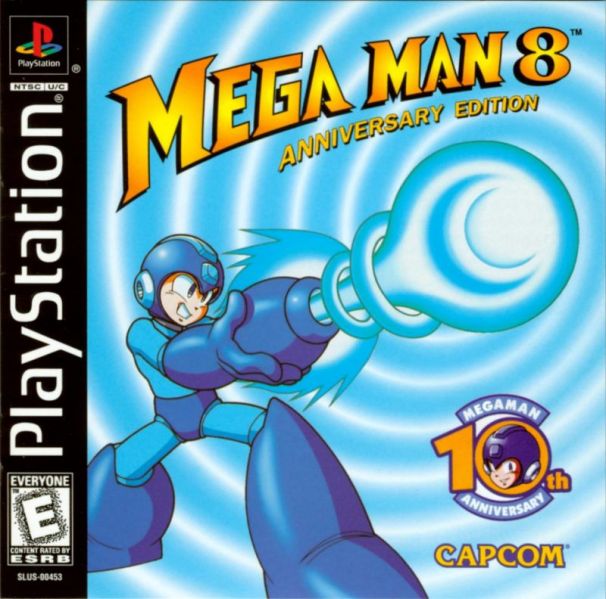
Obligatory note: There’s some minor differences between the Playstation and Sega Saturn versions of the soundtrack. Not sure why. As a side note, I prefer the Saturn variants!
You knew it was coming. After the mostly good synth-rock soundtrack of the Blue Bomber’s (formal, futbol-free) 16-bit debut, I’d have guessed Mega Man 8 would do about the same, just with the vast potential of Red Book CD audio backing the game’s songs. But the thing about Mega Man games is that Capcom kept bringing in new people with new approaches to write the music. With that, the stage was set for something… different. Courtesy of Shusaku Uchiyama (who went on to work on the Resident Evil games), we’ve got a surprisingly chill, and EDM-heavy soundtrack. It’s interesting, and not at all what I’d expect!
Mega Man 8 actually ends up pulling an X3, at least in 32-bit terms – which is to say that the jump to a CD platform comes with genre and instrumentation exploration. It’s a rational response to the jump in hardware. To be fair, this game doesn’t entirely abandon the rock tropes, but the songs are very synthesizer and beat heavy. The actual sample quality isn’t always great – I’m working under the impression that the game’s using the PS1’s tracker styled music, so it might be a RAM contention issue. As a general rule, I think the songs here sound their best when they lean into the dance music. There’s some outright house bangers here (Astro Man and Search Man come to mind), and some fun drum and bass tracks as well. Off the top of my head, these ingredients are fairly rare across the Mega Man series (though the Zero and ZX subseries apparently dabble), but they’re interesting and flavorful here, so that’s got to count for something.
There’s an insidious problem at the heart of this soundtrack, though – outside of its general aesthetic and mood, Mega Man 8‘s music just isn’t very memorable. The compositions tend to wander without really developing beyond their initial themes and a few variations. There’s some reused motifs throughout, which is kind of neat when you notice it, but I don’t feel particularly rewarded for paying attention enough to discover that. Anyways, this isn’t a problem you can easily muscle your way out of with higher recording fidelity. Classic Mega Man tracks ride or die on their hooks, and while Uchiyama deserves props for doing something different, the lack of strong melodies or thematic development mean that the music here rarely rises above the level of “…interesting, and not at all what I’d expect!” That doesn’t go as far as you might hope.
Nahadoth – Masked, Winged, and Hidden (2021)

I don’t know if I want to say I’m full-heartedly getting into dungeon synth, but my life has certainly conspired to place it in my listening rotation! More on that someday, maybe. Nahadoth comes to us courtesy of the prolific Adam Matlock, for whatever that’s worth. Perhaps not a lot, since I don’t usually judge musicians by the quantity of albums they’ve released. By my appraisal, this is pretty archetypal dungeon synth – lots of retro synths and samples, compositions that bounce between ambient, classical, and/or folk tropes, and an overall approach that would socket nicely into a mid-90s fantasy RPG. I don’t have the depth of experience to quip much about that (perhaps something about Summoning?), so we might as well dive in.
Here’s the key, and this isn’t exclusive to not just to Masked, Winged and Hidden: Composition matters. If you have a strong enough core to your song, you can play it on near any instrument and have it shine forth. The good news is that Nahadoth’s songwriting shines. It straddles the delicate line between ambient and more formally structured songs, and it’s pretty thorough-composed, to boot. I can get really sucked into these tracks – I’d somehow managed to convince myself they were especially long even though they mostly hover around 5-6 minutes outside of interludes. Nothing here’s especially complex, but there’s more than enough content to keep songs from getting too repetitive. Even the more ambient songs have enough subtle variations to keep things engaging. It’s not a hard thing to incorporate, admittedly, but the craft is always appreciated.
As much as I gush about the importance of compositions, the dungeon synth instrumentation is what makes Nahadoth itself, as opposed to… let’s say a black metal band, or a neoclassical chamber music act. Dungeon synth can include a diverse set of sounds, but Masked, Winged and Hidden goes all in on its fantasy vibes. Most of the instruments are keyboarded in some fashion, though there’s some live accordion parts (which I know are live because I’ve seen Nahadoth in concert and seen the accordion come out for the finale). The approach isn’t especially realistic sounding, but it certainly doesn’t need to be. Besides my own occasional affinity for these sounds, Nahadoth is also pretty good at mixing them together for effect, which helps contribute to the melancholy, wistful moods that permeate this album. It’s not the most dungeony dungeon synth, as absurd as that must be for you to read, but it’s a cohesive approach and another one of the album’s strengths.
Anyways, I don’t know enough about the genre to say if this is a good introduction, but it’s definitely been a good time, and it’s helped pique my overall interest in the genre. It’s not that far off from my usual electronic influences, but a few changes in the right places can make for a drastically different product!
Highlights: “Falling/The Need”, “No One Fears It As They Should”, “Traveled All This Way To Be Denied””
Captain Beefheart – Safe as Milk (1967)
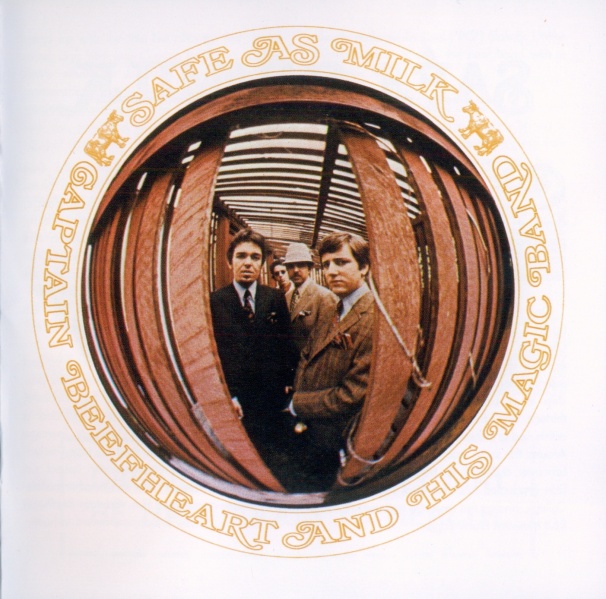
Here’s an admittedly less difficult album. Before making shockwaves with the experimental Trout Mask Replica, Captain Beefheart befriended Frank Zappa, had a few brushes with mainstream fame, and put out this relatively accessible chunk of psychedelic and somewhat experimental blues rock. There’s something about this era of mid-late 1960s music (early “classic” rock) that feels orthogonal to what I’m usually looking for out of my listening rotation, and this so-called Magic Band in their earliest incarnation seems stranger still, even though the music they’re playing is far more accessible than their later material. But that’s not the strangest thing about Safe as Milk – the uncanny bit is how Captain Beefheart managed to debut with a straight up dirty old man album.
It starts with the production; this isn’t exactly the highest budget recording. Everything’s audible, but the reverbs are weird, the volumes of various instruments keep changing between tracks, and the highest frequencies are lost amongst the ephemera of the 1960s. It’s a bit of an adjustment from the guaranteed pristine or at least intentionally lo-fi sounds of the present, and it’d be anachronistic at best of me to fault Captain Beefheart for not having recording technologies that hadn’t been invented yet, but it does make everything just that much grittier. Sometimes, though, that fits perfectly. Case in point – “Dropout Boogie”, which is this cursed gem of psychedelic garage rock with nasally vocals and lyrics capturing that individualistic to a fault and entitled Boomer mindset that’s causing so many problems these days. Absolutely fucked vibes*. I love it!
The more I think about it, the more I get out of the filthy side of this album. It’s just a bunch of rockers joining in on the psychedelic ferment of the era! I’m guessing if I ran into these guys on the street in 1967, they wouldn’t hesitate to hit on me (I’m pretty sure this is the premise of album opener “Sure ’Nuff ’n Yes I Do”), but the tunes are fun, as long as they keep the intensity up. The ballads here are hippified, saccharine nonsense. Some of that sneaks into the main material, which I guess is pretty expected for this era, but our rocker friends aren’t nearly as proficient in that artsy vein as for instance, the Beatles were. No, Don’s experimentation eventually gave him a path more suited to his talents, but it took him a while to get there.
Still, I’m feeling a lot better about Safe as Milk than I was expecting to. Not sure what that says about me.
Highlights: “Zig Zag Wanderer”, “Dropout Boogie”, “Electricity”, “Plastic Factory”
*I’m pretty sure I’m too old to use “vibes” without at least some irony.
